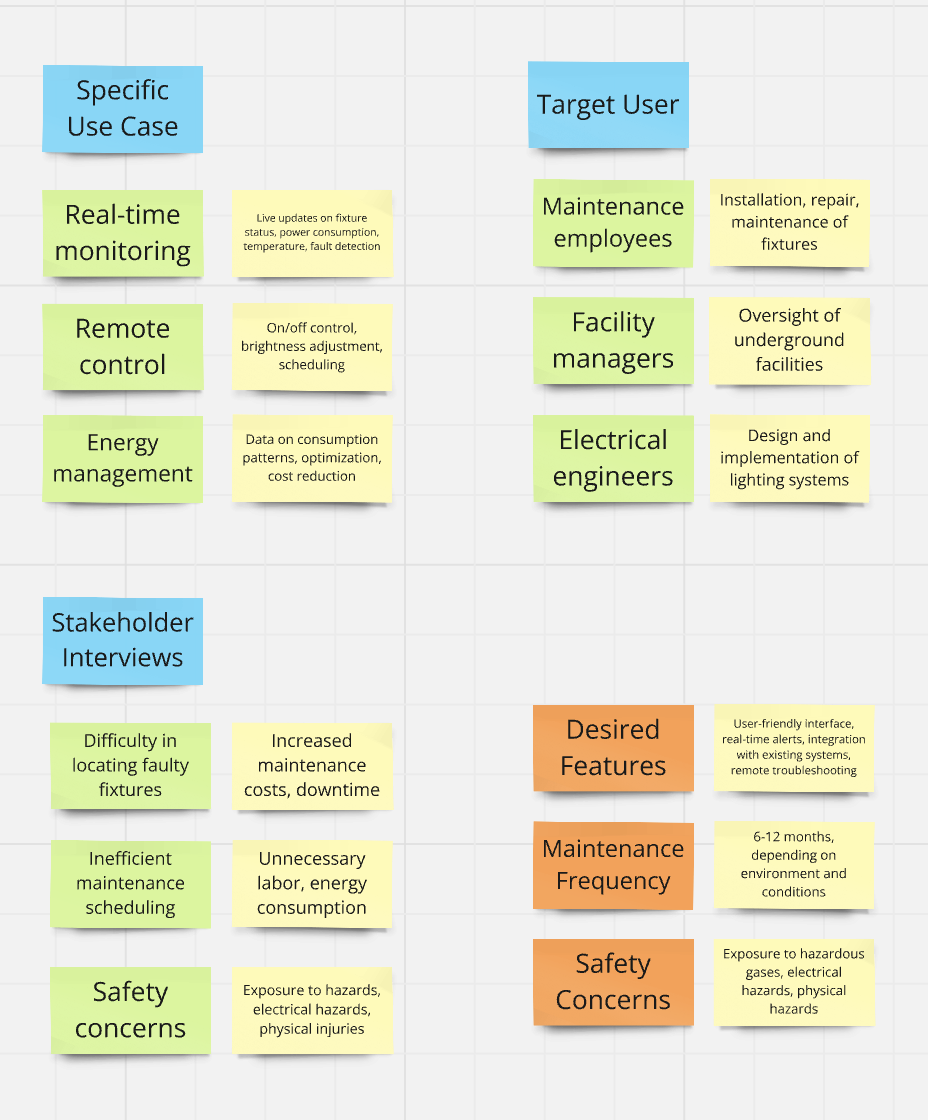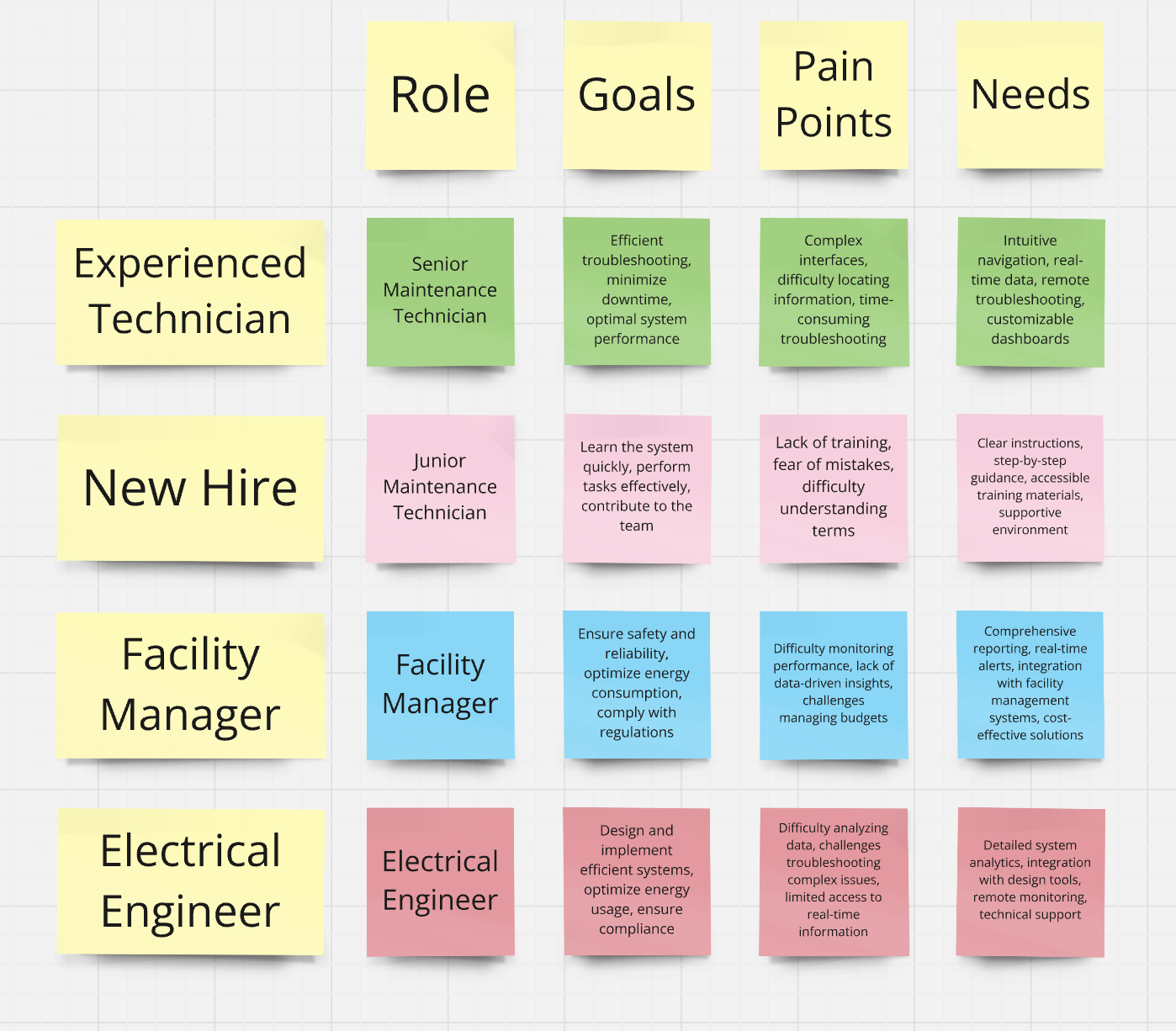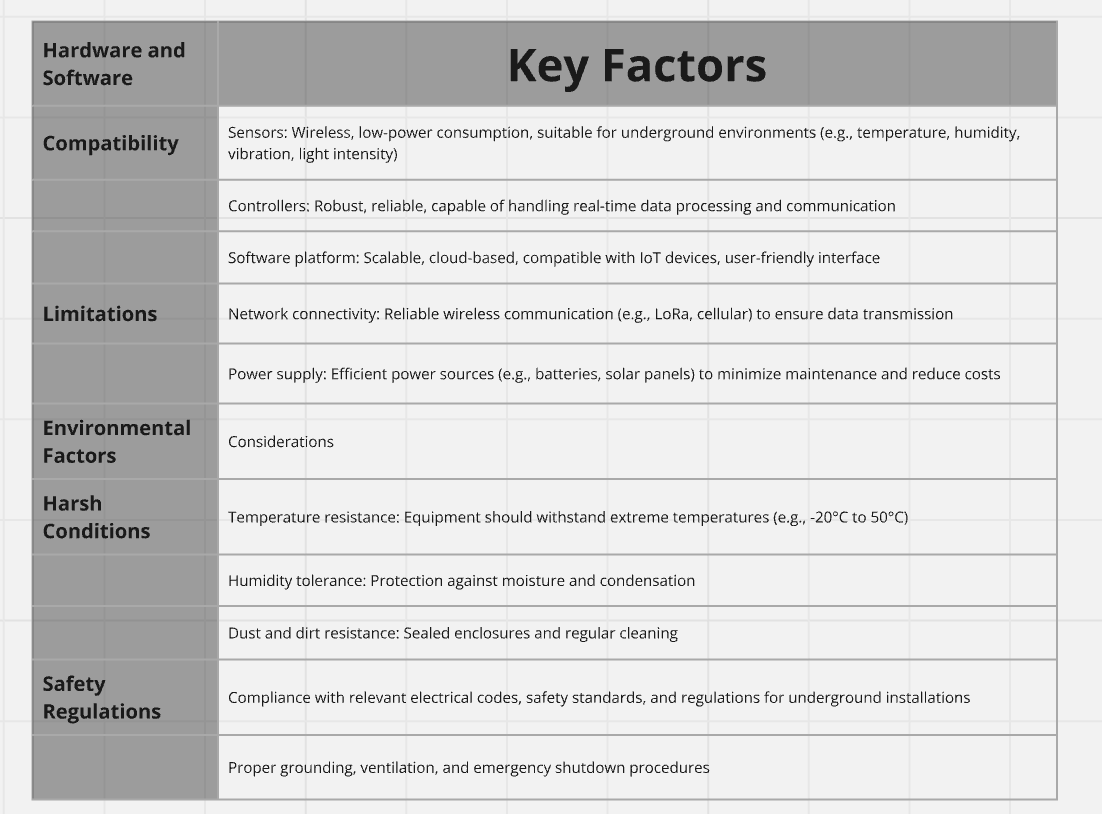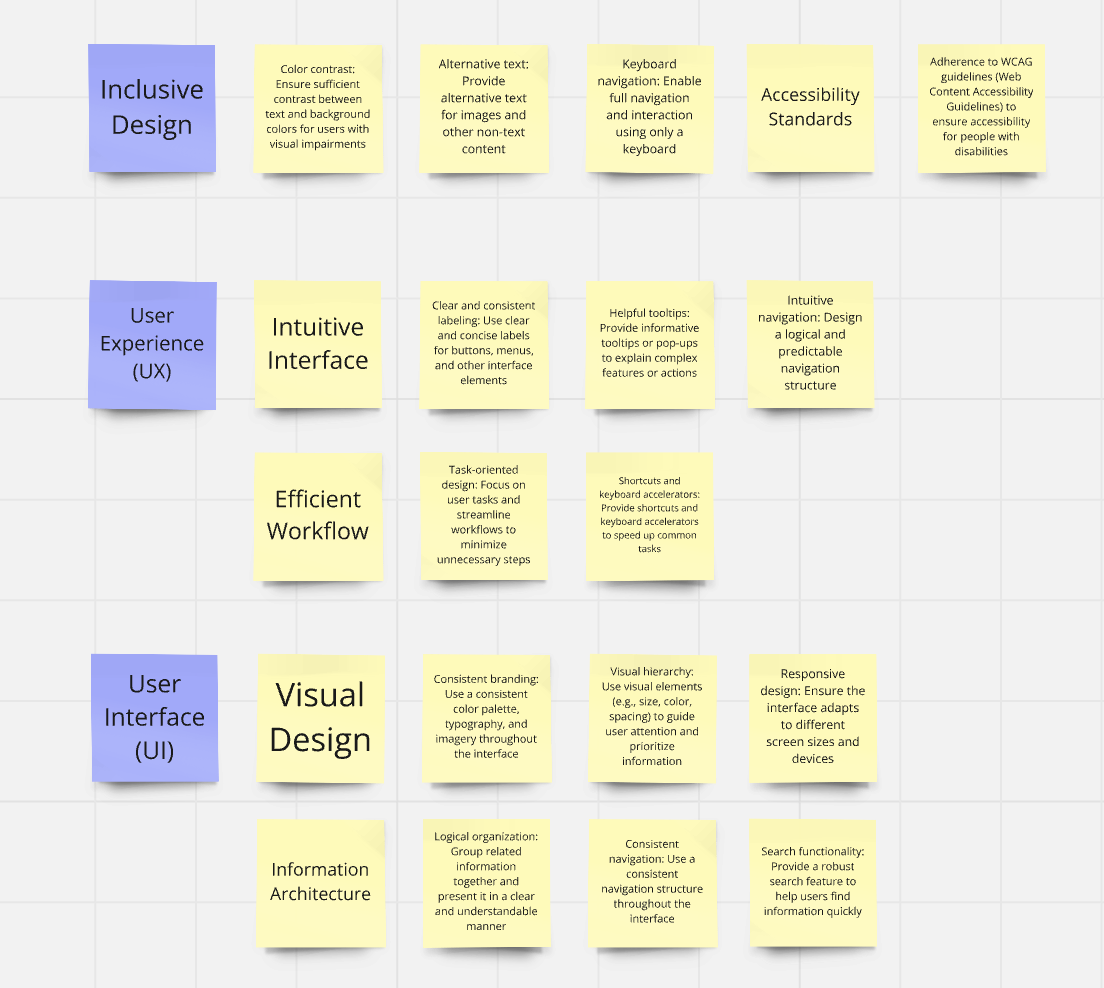Control System
The control system was developed to effectively monitor the status of lighting devices, specifically focused on underground lighting systems. This document outlines the design plan, user research, technical constraints, and design principles employed in the development of this control system.

Design Plan:
Understanding the Problem and Context
1. Defined the Scope:
Specific Use Cases: Identified the primary functions of the system (e.g., real-time monitoring, remote control, energy management).Target Users: Determined the users of the system (e.g., maintenance personnel, facility managers).
2. Conducted Interviews:
Stakeholders: Interviewed key stakeholders involved in underground lighting (e.g., facility owners, maintenance teams, electrical engineers).Questions:
What challenges did you currently face in managing underground lighting?
What features were most critical for a monitoring system?
How often was maintenance performed?
What safety concerns were associated with underground lighting?

Gathered User Data
1. Created User Personas:
Detailed Profiles: Developed personas that represented different user types (e.g., experienced technician, new hire).Identified Goals and Pain Points: Understood user needs, frustrations, and tasks related to underground lighting.
2. Conducted Usability Testing:
Prototype Testing: Created low-fidelity prototypes to test early concepts with users.Tasks: Designed tasks that simulated real-world scenarios (e.g., locating a faulty fixture, adjusting lighting levels).
Observations: Observed user behavior, identified pain points, and gathered feedback.

Understood Technical Constraints
1. Analyzed Hardware and Software:
Compatibility: Identified compatible hardware (sensors, controllers) and software platforms.Limitations: Understood any technical constraints or limitations (e.g., network connectivity, power supply).
2. Considered Environmental Factors:
Harsh Conditions: Considered the impact of underground environments (e.g., temperature, humidity, dust) on equipment.Safety Regulations: Ensured compliance with safety regulations for underground installations.

Researched Design Principles
1. Ensured Accessibility:
Inclusive Design: Considered the needs of users with disabilities (e.g., color blindness, low vision).Accessibility Standards: Adhered to accessibility guidelines (e.g., WCAG).
2. Enhanced User Experience (UX):
Intuitive Interface: Designed an interface that was easy to learn and use.Efficient Workflow: Optimized workflows to minimize user effort.
3. Created User Interface (UI):
Visual Design: Developed a visually appealing and consistent interface.Information Architecture: Organized information logically and intuitively.

Results:
Improved Monitoring Efficiency:The control system enabled effective real-time monitoring of underground lighting devices, ensuring timely identification of faults and optimized lighting performance.
Enhanced User Interaction:
The intuitive user interface and efficient workflows significantly improved user experience, making it easier for maintenance personnel and facility managers to manage lighting systems with minimal training.
Adaptability to Harsh Environments:
The system was designed to function effectively in underground environments, with consideration for temperature fluctuations, humidity, and dust, ensuring reliable operation under challenging conditions.
Compliance and Safety:
The control system adhered to safety regulations and accessibility standards, ensuring a secure and inclusive solution for all users, including those with disabilities.
Cost Savings:
By optimizing energy use and minimizing downtime through real-time insights and predictive maintenance features, the system helped reduce energy consumption and maintenance costs.
Successful Deployment:
The project was completed on time and within budget, meeting all the specified requirements for both functionality and user needs, leading to a successful implementation.
Design Excellence:
The system's design incorporated modern principles of accessibility, intuitive interfaces, and effective information architecture, making it not only functional but user-friendly. The UI was crafted to be visually appealing and consistent, enhancing usability and reducing cognitive load for users. The system’s modular design ensured scalability, allowing future enhancements or integrations to be easily incorporated without disrupting existing operations.



